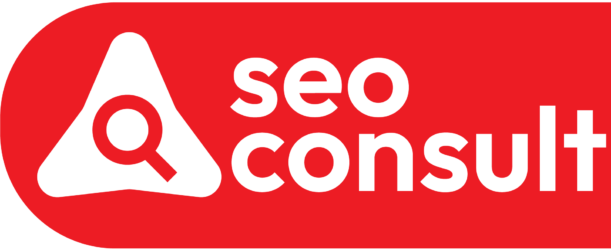In the realm of digital marketing, the seamless integration of content marketing and SEO stands as a pivotal strategy for businesses navigating the competitive online landscape. By effectively intertwining these two pillars of online success, organizations can unlock the potential to elevate their brand visibility, engage target audiences, and drive sustainable growth.
However, the complexities and nuances of merging these disciplines require a strategic approach and meticulous execution. Stay tuned to discover the key insights and actionable steps that can propel your business towards digital marketing excellence by mastering the art of harmonizing content marketing and SEO.
Importance of Integration
Integrating content marketing and SEO is pivotal for maximizing online visibility, attracting targeted audiences, and boosting brand recognition in competitive digital landscapes. Improved visibility is achieved by optimizing content with relevant keywords, meta tags, and quality backlinks, enhancing the chances of appearing in top search results.
This integration not only drives traffic but also leads to increased engagement by providing valuable, informative content that resonates with the audience. By aligning content marketing with SEO strategies, brands can effectively reach their target market, encourage interaction, and establish credibility within their industry.
The synergy between these two approaches is essential for staying ahead in the digital realm and ensuring that the right audience discovers and engages with the brand's offerings.
Effective Strategies
Utilizing targeted messaging and converting customers into brand advocates are key components of implementing effective strategies that integrate content marketing and SEO seamlessly.
Targeted messaging allows for personalized content that resonates with specific audience segments, increasing engagement and driving conversions.
By transforming satisfied customers into brand advocates, companies can leverage word-of-mouth marketing and social proof to amplify their reach and credibility.
These strategies not only improve visibility and rankings on search engines but also foster long-term customer loyalty and trust.
Incorporating targeted messaging and nurturing brand advocates in content marketing and SEO campaigns can lead to sustainable growth and a competitive edge in the digital landscape.
Success Factors
Analyzing the key performance indicators and measurable outcomes is essential in evaluating the success factors of both content marketing and SEO strategies. Measurement techniques play a crucial role in determining the effectiveness of campaigns.
By analyzing results, businesses can identify areas for improvement and make data-driven decisions. Improving content quality is vital for enhancing visibility and attracting organic traffic.
Monitoring SEO performance through metrics like search volume helps in understanding the impact of optimization efforts. Success in content marketing and SEO requires a comprehensive approach, utilizing various metrics to measure strategy success accurately.
Increasing the trustworthiness of created content can further contribute to the overall success of integrated marketing efforts.
Benefits of Integration
To leverage the full potential of content marketing and SEO, businesses can capitalize on the synergistic benefits that arise from their seamless integration. By combining these strategies, companies can experience improved visibility and increased traffic to their websites.
This integration enhances rankings in relevant searches, leading to a higher likelihood of attracting organic visitors. The cohesive approach also allows for a more strategic targeting of specific audiences, resulting in a more efficient use of resources and a greater impact on overall marketing efforts.
Ultimately, the integration of content marketing and SEO creates a powerful synergy that not only boosts online presence but also drives valuable traffic to the site, contributing to the overall success of the business.
Maximizing Gains
To optimize the combined potential of content marketing and SEO, businesses must strategically align their efforts to harness the full spectrum of benefits and maximize returns on investment. Revenue growth is a key outcome of this integration, as the synergy between content marketing and SEO can attract more qualified leads and drive conversions.
Engaging content plays a crucial role in capturing and retaining the attention of the target audience, while conversion optimization ensures that visitors take desired actions on the website. Keyword research is essential for identifying relevant topics and optimizing content for search engines, ultimately enhancing visibility and traffic.
Frequently Asked Questions
How Can Businesses Ensure That Their Content Marketing and SEO Strategies Align With Their Overall Marketing Goals and Objectives?
To ensure strategic alignment with marketing goals and objectives, businesses must focus on understanding their target audience, conducting competitive analysis, and tracking performance metrics.
By aligning content marketing and SEO strategies with these elements, companies can effectively reach their intended audience, improve brand visibility, and drive relevant traffic to their site.
Maximizing these efforts will lead to increased conversions, enhanced brand recognition, and overall business success.
What Are Some Common Mistakes to Avoid When Integrating Content Marketing and SEO Efforts?
Some common mistakes to avoid when integrating content marketing and SEO efforts are:
- Neglecting keyword research and optimization
- Overlooking the importance of link building and outreach strategies
- Failing to align content with SEO goals
- Not tracking and analyzing metrics regularly
- Not adapting to algorithm changes
Ensuring a cohesive strategy that incorporates these elements will help maximize the effectiveness of content marketing and SEO integration for improved online visibility and engagement.
How Can Businesses Adapt Their Content Marketing and SEO Strategies to Keep up With Changing Algorithms and Trends?
To adapt content marketing and SEO strategies to changing algorithms and trends, businesses must stay informed of algorithm updates.
Conduct competitive analysis and keyword research to optimize strategies. Implement data-driven approaches to refine content. Engage in continuous monitoring and adjustments to align with evolving trends.
Prioritize user experience and relevance in content creation. Embrace dynamic optimization methods to stay competitive in the digital landscape.
What Role Does User Experience Play in the Success of Integrated Content Marketing and SEO Campaigns?
User experience is pivotal in the success of integrated content marketing and SEO campaigns. UX optimization enhances conversion rates, while mobile responsiveness and site speed are crucial for user engagement.
Ensuring a seamless and user-friendly experience not only boosts rankings but also encourages visitors to stay longer on the site. By prioritizing user experience, businesses can drive more traffic, increase conversions, and ultimately achieve their marketing objectives effectively.
How Can Businesses Measure the ROI of Their Integrated Content Marketing and SEO Efforts?
Measuring effectiveness and tracking conversions are vital components for businesses to gauge the ROI of their integrated content marketing and SEO efforts.
By analyzing key performance indicators such as website traffic, conversion rates, lead generation, and keyword rankings, businesses can quantify the impact of their strategies.
Utilizing data-driven insights allows for continuous optimization and refinement, ensuring that resources are allocated effectively to maximize returns on investment.
Conclusion
In conclusion, the integration of content marketing and SEO is a strategic imperative for businesses looking to enhance their online presence and reach target audiences effectively. By aligning these two powerful strategies, organizations can drive traffic, boost brand visibility, and foster customer loyalty.
Implementing seamless integration tactics, leveraging effective strategies, and focusing on success factors are key to maximizing the benefits of this synergistic approach and achieving sustainable growth in today's competitive digital landscape.










